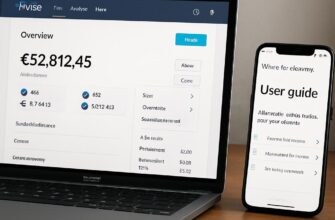Google is removing the &num=100 parameter, which allowed SEO services to obtain the top 100 search results for a single page query. That single-line tweak—adding &num=100 to a search URL—was a quick, reliable way for analysts to fetch broad SERP samples without clicking through pages, and its disappearance shifts how agencies and in-house teams collect competitive data.
- What exactly changed and how it looks in practice
- Why Google likely pulled the plug
- Immediate pain points for SEO tools and teams
- Technical consequences under the hood
- Alternatives and better practices to replace the lost shortcut
- Steps SEO teams should take now
- Practical tactics that work today
- Legal, ethical, and policy considerations
- How this affects pricing models and business strategy
- Real-life example from my work
- Quick comparison: old behavior vs new expectations
- What to watch next and how to future-proof your workflows
- Final thoughts
What exactly changed and how it looks in practice
Until recently, appending &num=100 to a Google search URL would return up to 100 organic results on a single page, saving time and simplifying scraping or manual review. With Google removing that capability, queries now respect tighter per-page limits and more aggressive pagination rules, meaning a single request rarely yields more than the first page of results.
For anyone who automated SERP snapshots, the effect is immediate: scripts that expected a long payload now need to request multiple pages, handle new tokens or parameters, and manage more HTTP sessions. The change is subtle from a browsing point of view, but it multiplies requests, increases rate-limit risk, and can make previously quick audits take much longer.
Why Google likely pulled the plug
There are a few logical reasons for removing the parameter, and they overlap. First, large single-page results create a low-friction surface for automated scraping, which can be used to collect massive amounts of competitive data quickly. Limiting per-request volume raises the technical bar for large-scale extraction.
Second, Google continually optimizes for user experience on mobile and tries to keep page weight predictable. Returning extremely long result pages is clumsy on phones and less useful when many results include rich SERP features like knowledge panels, local packs, and carousels. Finally, there’s an incentives angle: more pagination and dynamic loading preserves ad impressions and clicks that might otherwise shift if users or tools always consumed an expanded organic list.
Immediate pain points for SEO tools and teams
Rank trackers, automated crawlers, and audit tools relied on that single-URL trick to reduce complexity. Without it, those systems make more requests per keyword, increasing compute and proxy costs, and raising the likelihood of hitting captchas or temporary blocks.
SEO agencies that reported positions for hundreds of keywords in rapid batches will see slower turnarounds. Some internal dashboards that used nightly bulk pulls will need refactoring to keep response times reasonable and budgets in check.
Technical consequences under the hood
The obvious technical impact is multiplied HTTP calls: instead of one request returning 100 results, you now need ten requests to get the same data if the per-page limit is ten. That multiplies network overhead, request headers, and the complexity of session management. Teams must add robust retry logic, rotate proxies more frequently, and watch for increases in error rates.
Another less visible effect is fragmentation of SERP snapshots. When results are fetched over multiple paginated requests, the timing differences can mean rankings shift slightly between calls, complicating deterministic reporting. Reproducible SERP captures require greater care.
Alternatives and better practices to replace the lost shortcut
There’s no single magic fix that restores the old behavior, but several practical routes exist. The most sustainable approach is to move toward official data sources where possible: Google Search Console, Analytics, and paid Google APIs are first-class options. They give access to aggregated impressions, clicks, and often more reliable query-level insights without scraping.
Where raw SERP lists are essential, consider specialized SERP API providers that handle pagination, rate limits, and proxies for you. These services cost money but trade time and maintenance for predictable behavior. Third-party clickstream and market-intelligence vendors can also fill gaps with sampled user data that reflect real-world behavior rather than raw rank lists.
Steps SEO teams should take now
Adapting quickly reduces disruption. Start by auditing which workflows actually need top-100 lists and which can be scaled back. Not every project requires 100 positions; for many clients, visibility in the top 10 or featured snippets matters far more than a long tail of rankings.
Next, consolidate your data sources: funnel what you can through Search Console or Google’s APIs, and use third-party tools only where they add clear incremental value. Finally, plan for additional infrastructure costs and tighten monitoring so you detect rate-limit hits, CAPTCHAs, and other failures before they affect client deliverables.
Practical tactics that work today

Below are practical techniques I’ve tested with clients after similar Google tightening events. They’re not miracles, but they make data collection reliable and defensible.
- Use Search Console for authoritative query-level performance data and to track trends over time rather than absolute rank at scale.
- Employ SERP API vendors for ad-hoc deep dives where you really need page 2–10 snapshots.
- Sample intelligently: capture 5–10 high-priority keywords at high frequency and sample the long tail less often.
- Invest in robust proxy rotation and session handling if you must scrape; treat captchas and throttles as normal operating conditions.
Each tactic balances cost, legal risk, and accuracy. In many cases, combining them gives the best outcome: authoritative metrics from Google plus controlled external sampling for competitive intelligence.
Legal, ethical, and policy considerations
Scraping Google’s results has always sat in a gray area. Terms of service and acceptable use rules vary by Google product, and large-scale automated scraping can lead to IP blocks or legal notices. Removing an easy parameter doesn’t change the fundamentals: be careful about violating terms or causing undue load on Google’s systems.
Ethically, consider user privacy and the purpose of data collection. Aggregated, anonymized insights are generally less risky than building commercial products that replicate search functionality or harvest personal data. If your work touches on high-volume extraction, consult legal counsel and review API offerings that provide equivalent information legitimately.
How this affects pricing models and business strategy
Expect vendor pricing to adjust. Vendors that absorbed the cost of high-volume scraping will either raise prices or rework contracts to reflect the increased technical expense of collecting paginated data. Agencies might pass more of those costs to clients or change reporting cadence to keep fees steady.
Strategically, this is a chance to emphasize higher-value deliverables. Reports that translate rankings into traffic and revenue outcomes matter more than long rank lists. Clients prefer recommendations that move the needle, not raw data dumps.
Real-life example from my work
When a previous Google tweak limited a different scrape shortcut, my team had to rewrite an entire nightly pipeline in 48 hours to meet a reporting deadline. We switched from a brute-force approach to a mixed model: authoritative Search Console data for performance and a paid SERP API for competitive snapshots. The first month was costlier, but the output quality improved and clients appreciated clearer interpretation over sheer volume.
That experience taught me to design SEO systems for volatility: build modular pipelines, keep fallback providers, and measure the marginal benefit of each additional data point. Often, fewer but more accurate signals are far more useful than a long list of positions that nobody uses.
Quick comparison: old behavior vs new expectations
| Aspect | When &num=100 worked | After removal |
|---|---|---|
| Requests per keyword | 1 request could return up to 100 results | Multiple paginated requests required |
| Speed | Fast bulk pulls, low overhead | Slower, more network and processing time |
| Reliability | Deterministic single snapshot | Timing differences across pages can shift results |
| Anti-abuse risk | Lower per-request detection | Higher risk of blocks and captchas |
What to watch next and how to future-proof your workflows

Google’s behavior changes over time. Watch Search Console announcements, official Google developer channels, and major SEO tool vendors for guidance. Build your systems to be adaptable rather than optimized for a single shortcut. That reduces the shock when product teams tweak access patterns again.
Also, invest in metrics that survive platform shifts: organic clicks, conversion rates, and impressions tell the business story even if precise rank lists become harder to gather. Dashboards that prioritize outcomes make your work indispensable, not just data collection.
Final thoughts
The removal of the easy &num=100 shortcut is an annoyance for anyone who valued speed and simplicity, but it’s not a catastrophe. It forces a healthier approach: rely less on brittle scraping hacks and more on diversified, defensible data. That requires investment and discipline, but it also yields analyses that better reflect user behavior and business impact.
If your team needs tactical help reworking pipelines, choosing API providers, or re-prioritizing reporting, start by cataloging what you actually use and what drives client decisions. Then move incrementally—prove the value of changes before you scale them.
For more articles and practical guides on adapting to search engine changes, visit https://news-ads.com/ and read other materials from our website.







